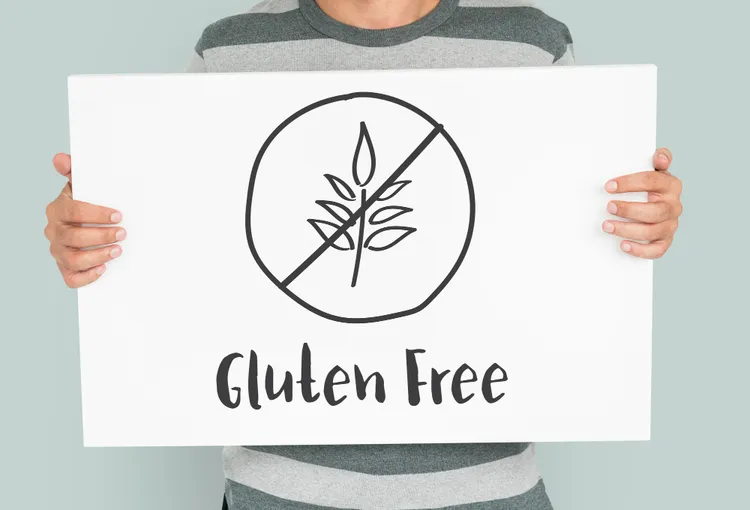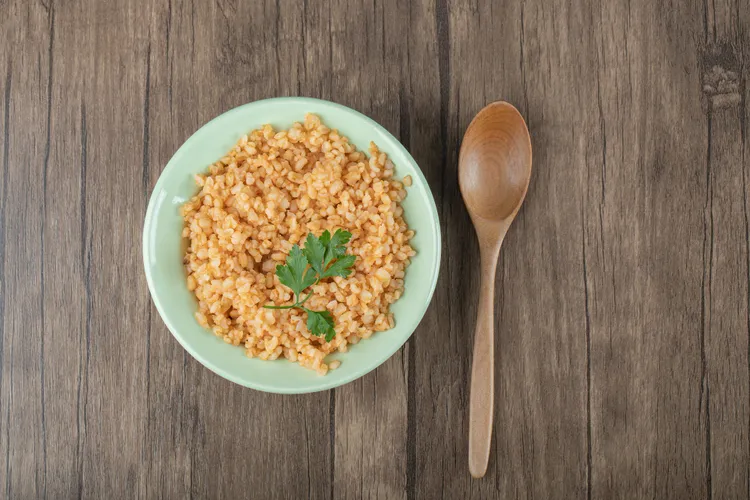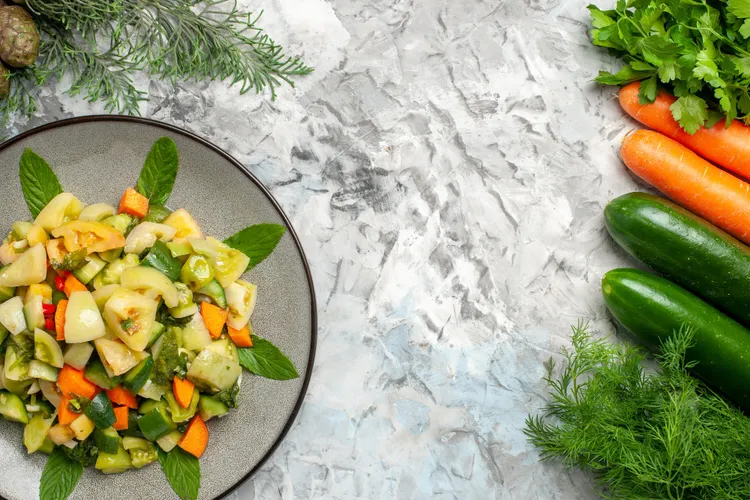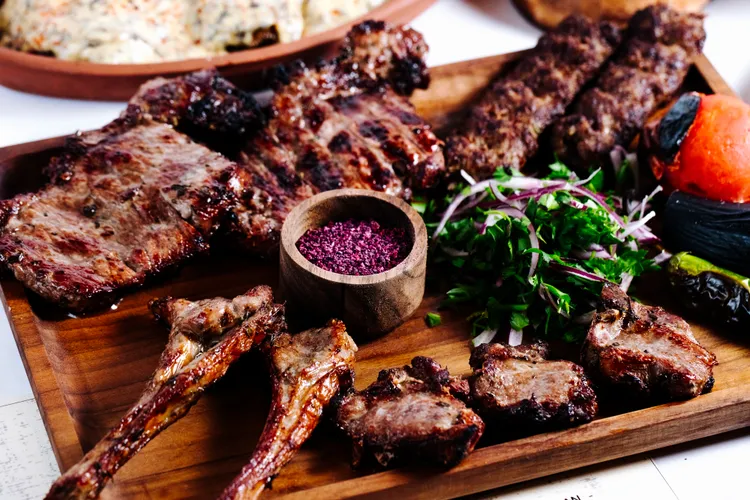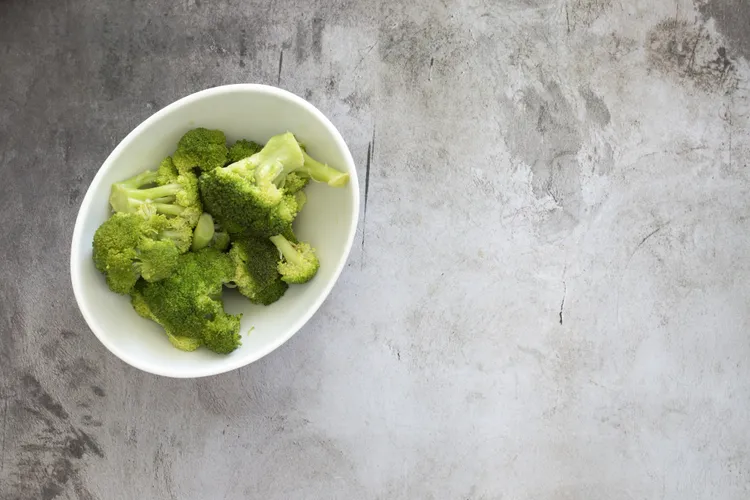Post-Workout Smoothies & Recovery Meals: Your Complete Guide to Refueling Naturally
Welcome, wellness warrior! If you’ve ever wondered what’s the best thing to eat after your workout - you’re in the right place. This guide is your go-to roadmap for post-workout smoothies and recovery meals that actually work (and taste amazing). We believe recovery food should be both functional and flavorful. That means smoothies made with real fruit, nourishing protein, and anti-inflammatory ingredients - and meals that leave you energized, not sluggish. Get ready to blend, refuel, and thrive.
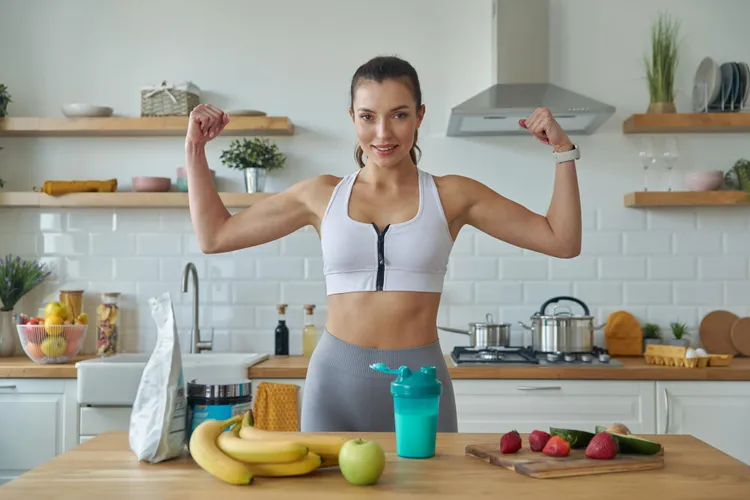
Refuel, Repair, and Rebalance
You’ve just crushed your workout - whether it’s strength training, yoga, or a morning run. Your heart’s racing, endorphins are flowing, and now your body is ready for the most important part of recovery: nourishment.
Post-workout nutrition isn’t about restriction or fad diets. It’s about feeding your body the nutrients it needs to rebuild muscles, restore energy, and reduce soreness - all while enjoying delicious, wholesome food.
Why Post-Workout Nutrition Matters
After you work out, your muscles use stored glycogen for fuel and experience tiny micro-tears that need repairing. Eating the right nutrients helps:
Rebuild muscle fibers through protein synthesis
Refill glycogen stores with carbohydrates
Reduce inflammation with antioxidants
Rehydrate with fluids and electrolytes
As we explain in “What to Eat After a Workout: Fueling Recovery for Optimal Performance”, pairing carbs and protein within a couple of hours post-exercise maximizes recovery and performance.
When Should You Eat After a Workout?
Aim to refuel within 30-60 minutes after finishing your session - this is when your body’s nutrient absorption is most efficient.
If you’re not hungry right away, start with a smoothie, then enjoy a balanced meal 1-2 hours later.
For a detailed timing breakdown, check out: What to Eat After a Workout: Timing & Strategy
The Ideal Nutrient Balance
Your post-workout meals and smoothies should focus on:
| Nutrient | Purpose | Food Sources |
|---|---|---|
| Protein | Muscle repair | Greek yogurt, whey or plant protein, tofu, lentils, fish |
| Carbs | Refill glycogen | Bananas, oats, quinoa, sweet potatoes, berries |
| Healthy Fats | Reduce inflammation | Avocado, chia, flaxseed, olive oil |
| Micronutrients | Boost recovery | Leafy greens, citrus, turmeric, berries |
| Hydration | Replace fluids | Water, coconut water, smoothies |
Want to learn more about nutrient ratios? Read our supporting blog: The Science of Post-Workout Nutrition
Best Post-Workout Smoothies
Here are our five smoothie recipes that strike the perfect balance of flavor, protein, and recovery power.
Banana Protein Smoothie for Post-Workout Recovery
Why it works: Quick carbs + fast-digesting protein = perfect for muscle recovery. Simple and light.
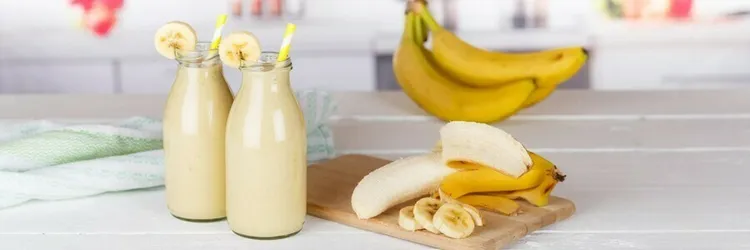
Protein power smoothie
Why it works: Sweet, hydrating, antioxidant-packed - ideal for a summer cooldown.

Cherry Banana Protein Smoothie
Why it works: Combines antioxidants + healthy fats + protein for reduced muscle soreness.
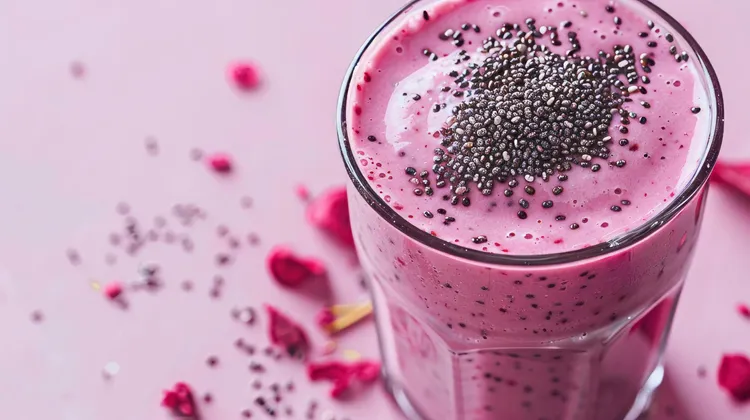
Peach Avocado Smoothie with Chia Seeds
Why it works: Creamy, satisfying, and rich in anti-inflammatory fats - great for recovery days.
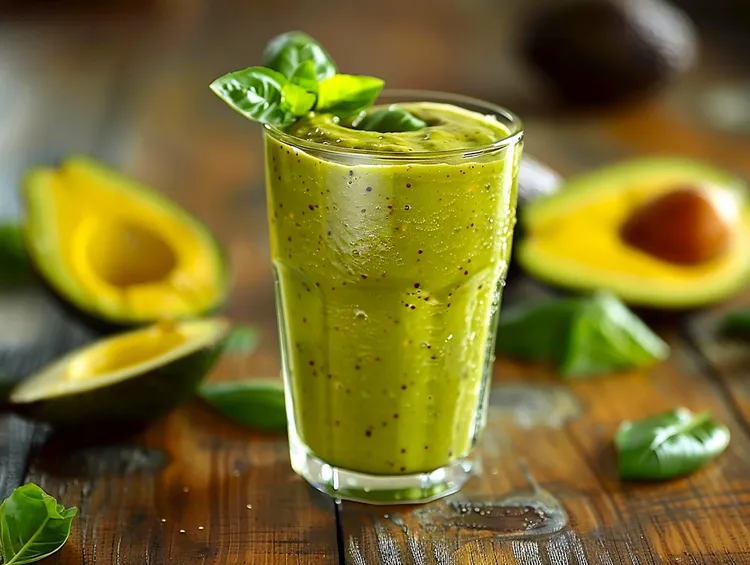
Blueberry almond coconut smoothie
Why it works: Antioxidant-rich to fight exercise-induced oxidative stress.

For more smoothie ideas (including high-protein and anti-inflammatory blends):
High-Protein Smoothie Recipes for Muscle Recovery
Anti-Inflammatory Smoothies for Muscle Soreness
Whole-Food Recovery Meals
Once your smoothie has settled, nourish yourself with a balanced, whole-food meal.
Mexican Quinoa with Avocado & Lime
Why it works: Complete protein from quinoa, fiber from black beans, and healthy fats from avocado. A one-pan wonder for muscle recovery!
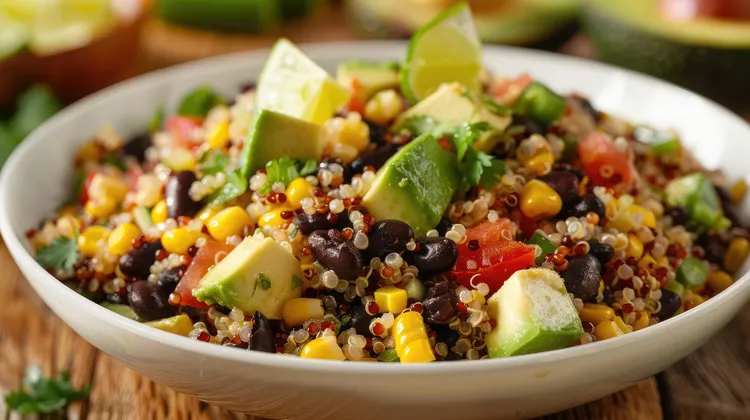
Why it works: Rich in omega-3s to reduce inflammation and improve muscle function.
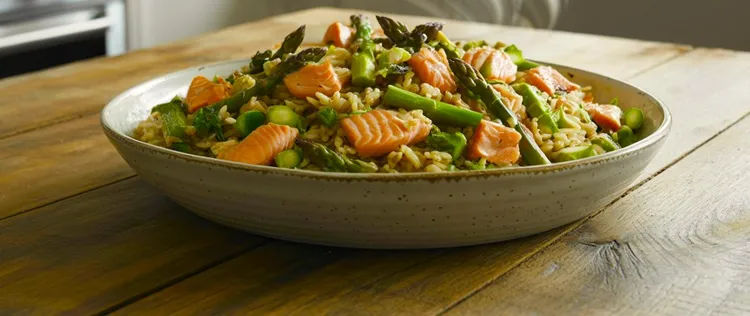
Why it works: High-protein and complex-carb combo to restore glycogen and energy levels.
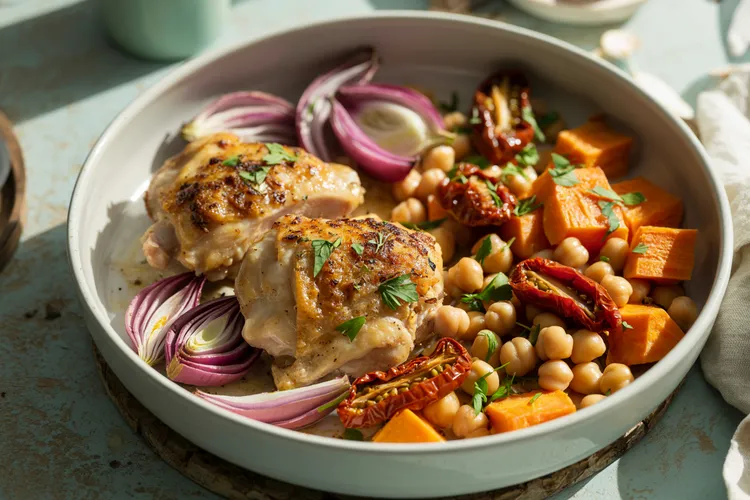
For vegan or vegetarian options, visit: Plant-Based Recovery Meals That Actually Work
Grocery & Meal Prep Tips
Meal prep can make recovery effortless - even on busy days.
Freeze smoothie packs with fruit + protein powder ready to blend.
Batch-cook grains like quinoa or brown rice.
Pre-chop veggies and store in airtight containers.
Keep coconut water or homemade electrolyte drink on hand.
Common Post-Workout Mistakes
Even the most dedicated fitness lovers sometimes get this wrong. Avoid:
Skipping your post-workout meal.
Only drinking protein (no carbs = slower recovery).
Eating ultra-processed “fitness snacks.”
Ignoring hydration.
Learn how to fix these in our full guide: Common Post-Workout Nutrition Mistakes (and How to Fix Them)
Holistic Recovery Beyond Food
True recovery extends beyond nutrition. Support your body by:
Stretching and foam rolling
Prioritizing 7-9 hours of sleep
Taking Epsom salt baths
Practicing mindfulness or deep breathing
Explore non-diet strategies here: Mindful Recovery: Beyond Nutrition
Closing Note
Your body works hard - treat it with the nourishment it deserves.
Remember: consistency + quality = results.
Your post-workout nutrition is a form of self-care. It’s not about restriction - it’s about replenishment, balance, and mindful eating. Remember: every choice you make after your workout helps your body rebuild stronger and recover smarter.
FAQ
1. What is the best smoothie to drink after a workout?
The best post-workout smoothie combines protein, carbohydrates, and hydration. A great example is Banana Protein Smoothie, which uses banana for carbs, whey protein for muscle repair, and water for quick absorption.
For more smoothie ideas, see our supporting post: High-Protein Smoothie Recipes for Muscle Recovery.
2. How long after my workout should I eat or drink?
Aim to eat or drink something within 30-60 minutes of finishing your workout. This is when your muscles are primed to absorb nutrients. If you’re short on time, sip a smoothie right away and have a full meal within 2–3 hours.
Learn more in: What to Eat After a Workout: Timing & Strategy.
3. Why is protein so important after a workout?
Protein provides amino acids that rebuild muscle fibers damaged during exercise. Without enough protein, recovery slows down and muscle soreness increases.
Smoothies with Greek yogurt, protein powder, or tofu are excellent choices.
4. What are the best post-workout meals?
Top CookThisMuch-approved recovery meals include:
Mexican Quinoa with Avocado & Lime - complete plant-based protein.
Salmon and Asparagus Brown Rice Pilaf - omega-3 powerhouse.
Baked Chicken & Sweet Potato with Chickpeas - protein and complex carbs combo.
Explore more in our post: Plant-Based Recovery Meals That Actually Work.
5. Can I drink smoothies every day after working out?
Absolutely! Smoothies are a quick and easy way to refuel - just make sure they’re balanced with protein + carbs + fiber. Vary your ingredients for maximum benefits: bananas for potassium, berries for antioxidants, and seeds for omega-3s.
6. What should I avoid eating right after a workout?
Avoid ultra-processed snacks, fried foods, and sugary treats immediately after training - they slow digestion and may cause inflammation. Instead, opt for whole, nutrient-dense foods like the ones featured in our recipes.
See: Common Post-Workout Nutrition Mistakes (and How to Fix Them).
7. Are post-workout smoothies good for weight loss?
Yes - when made with the right balance of nutrients. High-protein, low-added-sugar smoothies help you stay full longer, reduce cravings, and build lean muscle (which boosts metabolism).
Stick to whole ingredients like banana, spinach, chia, and protein powder.
8. What’s the best plant-based meal for muscle recovery?
Mexican Quinoa with Avocado & Lime is a standout vegan recovery meal - it’s rich in plant protein, complex carbs, and healthy fats.
Other great options include tofu stir-fries and lentil curries.
For more, check out Plant-Based Recovery Meals That Actually Work.
9. Can I prepare my post-workout meals in advance?
Yes! Meal prep is your recovery secret weapon. Batch-cook grains, roast veggies, and prep smoothie packs with frozen fruit.
10. How can I recover faster besides food?
Holistic recovery isn’t just about what’s on your plate. Support your body with:
Proper hydration (water or coconut water)
Quality sleep (7-9 hours)
Stretching & mindfulness
Epsom salt baths
Learn more in Mindful Recovery: Beyond Nutrition.


